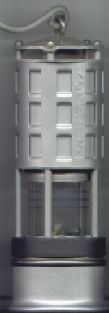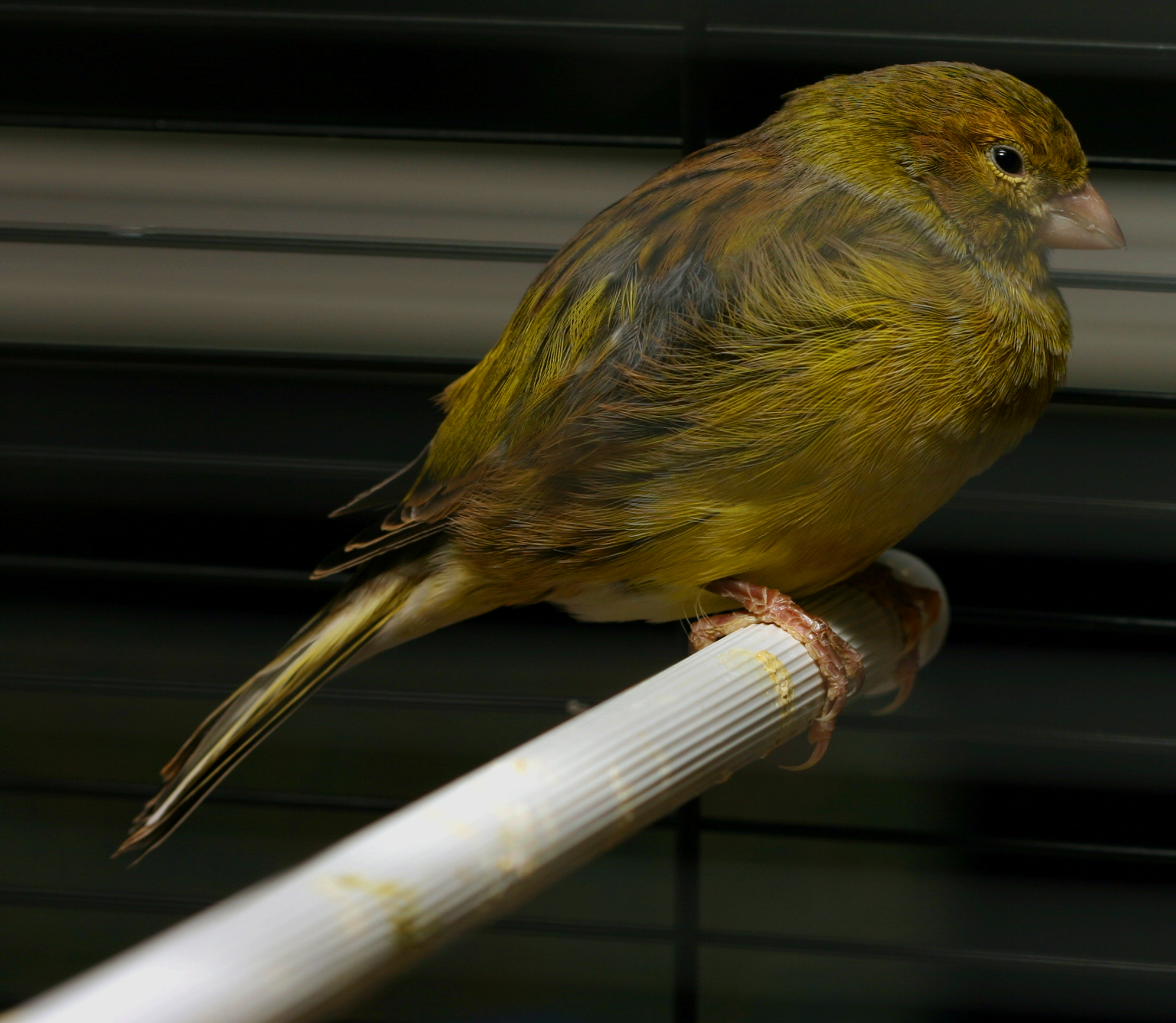|
Afterdamp
Afterdamp is the toxic mixture of gases left in a mine following an explosion caused by methane-rich firedamp, which itself can initiate a much larger explosion of coal dust. The term is etymologically and practically related to other terms for underground mine gases—such as firedamp, white damp, and black damp, with afterdamp being composed, rather, primarily by carbon dioxide, carbon monoxide and nitrogen, with highly toxic stinkdamp-constituent hydrogen sulfide possibly also present. However, the high content of carbon monoxide is the component that kills, preferentially combining with haemoglobin in the blood and thus depriving victims of oxygen. Globally, afterdamp has caused many of the casualties in disasters of pit coalfields, including British, such as the Senghenydd colliery disaster. Such disasters continue to afflict working mines, for instance in mainland China. Etymology The meaning of "damp" in this term, while most commonly understood to imply humidity, pre ... [...More Info...] [...Related Items...] OR: [Wikipedia] [Google] [Baidu] |
Senghenydd Colliery Disaster
The Senghenydd colliery disaster, also known as the Senghenydd explosion (), occurred at the Universal Colliery in Senghenydd, near Caerphilly, Glamorgan, Wales, on 14 October 1913. The explosion, which killed 439 miners and a rescuer, is the worst mining accident in the United Kingdom. Universal Colliery, on the South Wales Coalfield, extracted steam coal, which was much in demand. Some of the region's coal seams contained high quantities of firedamp, a highly explosive gas consisting of methane and hydrogen. In an earlier disaster in May 1901, three underground explosions at the colliery killed 81 miners. The inquest established that the colliery had high levels of airborne coal dust, which would have exacerbated the explosion and carried it further into the mine workings. The cause of the 1913 explosion is unknown, but the subsequent inquiry thought the most likely cause was a spark from underground signalling equipment that could have ignited any firedamp present. The mine ... [...More Info...] [...Related Items...] OR: [Wikipedia] [Google] [Baidu] |
Black Damp
Blackdamp (also known as stythe or choke damp), sometimes found in enclosed environments such as mines, sewers, wells, tunnels and ships' holds, is an asphyxiant, reducing the available oxygen content of air to a level incapable of sustaining human or animal life. It is not a single gas but a mixture of unbreathable gases left after oxygen is removed from the air; it typically consists of nitrogen, carbon dioxide and water vapour. The term is etymologically and practically related to terms for other underground mine gases such as fire damp, white damp, stink damp, and afterdamp. Etymology The meaning of "damp" in this term, while nowadays understood to imply humidity, presents evidence of having been separated from this meaning at least by the first decade of the 18th century; the original meaning of "vapor" derives from a Proto-Germanic origin, ''dampaz'', which gave rise to its immediate English predecessor, the Middle Low German ''damp'' (with no record of an Old English in ... [...More Info...] [...Related Items...] OR: [Wikipedia] [Google] [Baidu] |
John Scott Haldane
John Scott Haldane (; 2 May 1860 – 14/15 March 1936) was a Scottish physician physiologist and philosopher famous for intrepid self-experimentation which led to many important discoveries about the human body and the nature of gases. He also experimented on his son, the celebrated and polymathic biologist J. B. S. Haldane, even when he was quite young. Haldane locked himself in sealed chambers breathing potentially lethal cocktails of gases while recording their effect on his mind and body. Haldane visited the scenes of many mining disasters and investigated their causes. When the Germans used poison gas in World War I, Haldane went to the front at the request of Lord Kitchener and attempted to identify the gases being used. One outcome of this was his invention of a respirator, known as the black veil. Haldane's investigations into decompression sickness resulted in the concept of staged decompression, and the first reasonably reliable decompression tables, and his m ... [...More Info...] [...Related Items...] OR: [Wikipedia] [Google] [Baidu] |
White Damp
Whitedamp is a noxious mixture of gases formed by the combustion of coal, usually in an enclosed environment such as a coal mine. The main, most toxic constituent is carbon monoxide, which causes carbon monoxide poisoning. Hydrogen sulfide, also called stinkdamp, may co-occur. Coal frequently starts to burn slowly in mines when it is exposed to the atmosphere; partial combustion produces carbon monoxide. The term is etymologically and practically related to terms for other underground mine gases such as firedamp, black damp, stink damp, and afterdamp. Etymology The meaning of "damp" in this term, while most commonly understood to imply humidity, presents evidence of having been separated from that newer, irrelevant meaning at least by the first decade of the 18th century, where the original relevant meaning of "vapor" derives from a Proto-Germanic origin, ''dampaz'', which gave rise to its immediate English predecessor, the Middle Low German ''damp'' (with no record of an Old Eng ... [...More Info...] [...Related Items...] OR: [Wikipedia] [Google] [Baidu] |
Firedamp
Firedamp is any flammable gas found in coal mines, typically coalbed methane. It is particularly found in areas where the coal is bituminous. The gas accumulates in pockets in the coal and adjacent strata and, when they are penetrated, the release of the gas can cause explosions. Historically, if such a pocket was highly pressurized, it was termed a "bag of foulness". Name Damp is the collective name given to all gases (other than air) found in coal mines in Great Britain and North America. As well as firedamp, other damps include '' blackdamp'' (nonbreathable mixture of carbon dioxide, water vapour and other gases); whitedamp (carbon monoxide and other gases produced by combustion); poisonous, explosive '' stinkdamp'' (hydrogen sulfide), with its characteristic rotten-egg odour; and the insidiously lethal '' afterdamp'' (carbon monoxide and other gases) which are produced following explosions of firedamp or coal dust. Etymology Often hyphenated as fire-damp, this ... [...More Info...] [...Related Items...] OR: [Wikipedia] [Google] [Baidu] |
Methane
Methane ( , ) is a chemical compound with the chemical formula (one carbon atom bonded to four hydrogen atoms). It is a group-14 hydride, the simplest alkane, and the main constituent of natural gas. The abundance of methane on Earth makes it an economically attractive fuel, although capturing and storing it is difficult because it is a gas at standard temperature and pressure. In the Earth's atmosphere methane is transparent to visible light but absorbs infrared radiation, acting as a greenhouse gas. Methane is an Organic chemistry, organic Organic compound, compound, and among the simplest of organic compounds. Methane is also a hydrocarbon. Naturally occurring methane is found both below ground and under the seafloor and is formed by both geological and biological processes. The largest reservoir of methane is under the seafloor in the form of methane clathrates. When methane reaches the surface and the Atmosphere of Earth, atmosphere, it is known as atmospheric methane. ... [...More Info...] [...Related Items...] OR: [Wikipedia] [Google] [Baidu] |
Domestic Canary
The domestic canary (''Serinus canaria'' forma ''domestica''), often simply known as the canary, is a domesticated form of the wild canary, a small songbird in the finch family originating in the Macaronesian Islands. Over the past 500 years of captivity, a wide variety of coloured, decorative and singing canaries have been bred through selection. The canary has been kept as a pet for centuries, which began after the European conquests of the islands inhabited by its wild ancestor. They were domesticated and became prized possessions in 17th century Europe, eventually becoming popular even amongst poorer households, largely due to its melodious song and flexibility in breeding. They were also a highly popular pet in the United States from the 19th century until the mid 20th century. Canaries have also been used in the coal mining industry to detect carbon monoxide, a practice that has since been ceased. Domestic canaries come in a wide variety of different plumage colours, un ... [...More Info...] [...Related Items...] OR: [Wikipedia] [Google] [Baidu] |
Mine Safety
Mine safety is a broad term referring to the practice of controlling and managing a wide range of hazards associated with the life cycle of mining-related activities. Mine safety practice involves the implementation of recognised Hierarchy of hazard controls, hazard controls and/or reduction of risks associated with mining activities to legally, socially and morally acceptable levels. While the fundamental principle of mine safety is to remove health and safety risks to mine workers, mining safety practice may also focus on the reduction of risks to plant (machinery) together with the structure and orebody of the mine. Safety has long been a concern in the mining business, especially in underground mining. The Courrières mine disaster, Europe's worst mining accident, involved the death of 1,099 miners in Northern France on March 10, 1906. This disaster was surpassed only by the Benxihu Colliery accident in China on April 26, 1942, which killed 1,549 miners. While mining today is s ... [...More Info...] [...Related Items...] OR: [Wikipedia] [Google] [Baidu] |
John Gillies Priestley
John Gillies Priestley (10 December 1879 – 9 February 1941) was a British physiologist known for his work on gases and human respiration. Along with Haldane, he established the role of carbon dioxide concentration in the regulation of breathing. Background Priestly was born in Bingley, Yorkshire to Ann Ford and Charles Henry. He was educated at Eton and Christ Church, Oxford and qualified in medicine at St. Bartholomew's Hospital. He spent some time working with Wilhelm Falta in Vienna before returning to join as a director of the chemical pathology laboratory at St. Bartholomew's. Affected by tuberculosis in 1912 he moved to Oxford and served in the Royal Army Medical Corps during World War I. He then returned to teach clinical physiology at Oxford. It was here that he worked with John Scott Haldane John Scott Haldane (; 2 May 1860 – 14/15 March 1936) was a Scottish physician physiologist and philosopher famous for intrepid self-experimentation which led to many impor ... [...More Info...] [...Related Items...] OR: [Wikipedia] [Google] [Baidu] |



